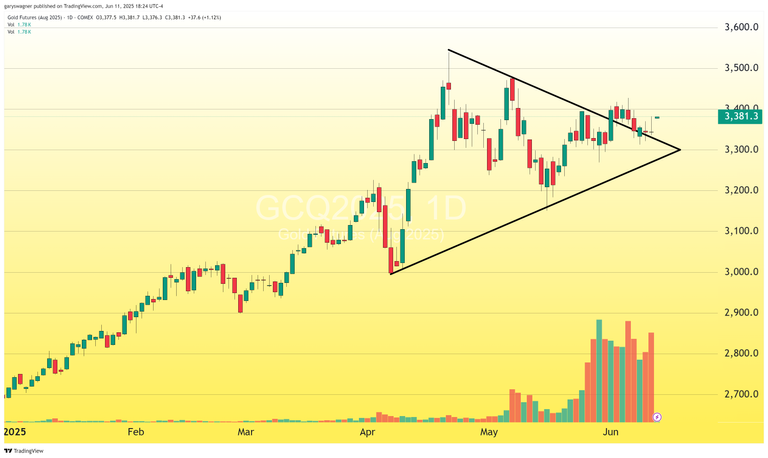Gold futures demonstrated remarkable strength on Wednesday, with the most active August contract climbing $31.20 to reach $3,378 per troy ounce as of 6:15 PM ET. The precious metal's momentum continued into Asian trading sessions, with Australian markets showing additional gains that pushed the net increase to over $33, reflecting sustained global appetite for the traditional safe-haven asset.

According to Trade Nation's David Morrison, the metal's appeal has been amplified by concerns surrounding the Trump administration's trade policies, particularly the implementation of "reciprocal" tariffs that a court has allowed to remain in place pending appeals.
A key driver behind gold's ascent has been the persistent weakness in the U.S. dollar, which Morrison notes remains "overvalued by many measures." This currency dynamic aligns with President Trump's stated preference for a weaker dollar to enhance American export competitiveness, creating an environment where dollar-denominated gold becomes more attractive to international investors.
The precious metal's gains occurred against a backdrop of significant diplomatic developments. President Trump announced a tentative trade agreement with China following two days of negotiations in London, representing a potential easing of the prolonged trade tensions between the world's two largest economies. Under this framework deal, both nations have agreed to reduce export controls on strategic materials, with China lifting restrictions on rare earth exports and the United States easing semiconductor export limitations.
However, the trade landscape remains complex and somewhat contradictory. While the framework agreement suggests progress toward normalization, Beijing has simultaneously imposed a six-month limit on rare-earth export licenses specifically targeting U.S. automakers and manufacturers, according to sources familiar with the matter. This dual approach has created uncertainty among investors, who are struggling to interpret the conflicting signals from the ongoing trade negotiations.
Adding to the market's complexity, recent economic data has shown encouraging signs of cooling inflation. The U.S. Bureau of Labor Statistics reported that the May Consumer Price Index rose by just 0.1% month-over-month, down from April's 0.2% increase and below the consensus estimate of 0.2%. Core CPI, which excludes volatile food and energy costs, similarly decelerated to 0.1% monthly growth from April's 0.2%, significantly undershooting the 0.3% consensus forecast.
This inflation moderation would typically reduce gold's appeal as an inflation hedge, yet the metal continues to attract investment flows. As Saxo Bank analysts noted, "Gold trades higher despite the US and China agreeing to ease trade tensions, with focus on today's US inflation print, investor appetite for US 10-year notes being auctioned today, continued central bank demand, and ongoing demand for investment metals."
The current gold rally reflects the precious metal's evolving role in modern portfolios. Beyond its traditional function as an inflation hedge, gold has become increasingly valuable as a hedge against geopolitical uncertainty and currency instability. The ongoing central bank demand mentioned by Saxo Bank underscores institutional confidence in gold's long-term value proposition, even as traditional economic indicators might suggest reduced need for safe-haven assets.
The simultaneous occurrence of diplomatic progress and continued safe-haven demand illustrates the market's sophisticated understanding of risk. While the U.S.-China framework agreement represents meaningful progress toward trade normalization, investors recognize that implementation remains uncertain and that other sources of economic volatility persist.
For those who wish to learn more about our service, please Click Here
Wishing you as always good trading,

